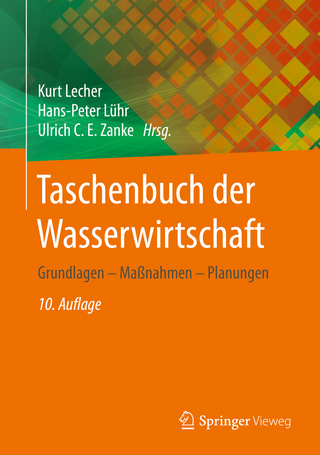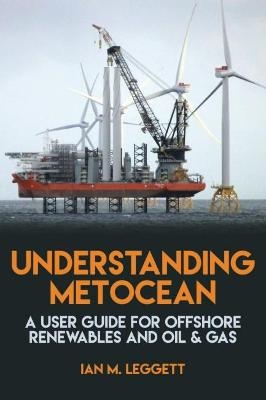
The Development of Atmospheric General Circulation Models
Cambridge University Press (Verlag)
978-1-108-44569-6 (ISBN)
Presenting a comprehensive discussion of general circulation models of the atmosphere, this book covers their historical and contemporary development, their societal context, and current efforts to integrate these models into wider Earth-system models. Leading researchers provide unique perspectives on the scientific breakthroughs, overarching themes, critical applications, and future prospects for atmospheric general circulation models. Key interdisciplinary links to other subject areas such as chemistry, oceanography and ecology are also highlighted. This book is a core reference for academic researchers and professionals involved in atmospheric physics, meteorology and climate science, and can be used as a resource for graduate-level courses in climate modeling and numerical weather prediction. Given the critical role that atmospheric general circulation models are playing in the intense public discourse on climate change, it is also a valuable resource for policy makers and all those concerned with the scientific basis for the ongoing public-policy debate.
Leo Donner received his Ph.D. in Geophysical Sciences from the University of Chicago in 1983. His research focuses on atmospheric general circulation modeling, especially the treatment of clouds and convective processes. He has served as the science chair of the Global Atmospheric Model Development Team at the National Oceanic and Atmospheric Administration's Geophysical Fluid Dynamics Laboratory at Princeton University, New Jersey and a co-chair of the Atmospheric Model Working Group for the Community Atmospheric Model at the National Center for Atmospheric Research, Colorado. These models are often regarded as the two leading atmospheric general circulation models for climate studies in the United States. Leo Donner is also a lecturer in the Program in Atmospheric and Oceanic Science at Princeton University. He serves on the advisory board for the journal Tellus and has been an editor of the Journal of Climate. Wayne Schubert received his Ph.D. in Atmospheric Science from the University of California, Los Angeles in 1973, and then went on to join the faculty of the Department of Atmospheric Science at Colorado State University, where he presently teaches graduate-level atmospheric dynamics. His research covers tropical meteorology, atmospheric dynamics and numerical weather prediction. Professor Schubert is a Fellow of the American Meteorological Society and has served as Co-Chief Editor of the Journal of the Atmospheric Sciences and as the AMS Publications Commissioner. He presently serves as an Editor of the Journal of Advances in Modeling Earth Systems. Richard Somerville is Distinguished Professor Emeritus and Research Professor at Scripps Institution of Oceanography, University of California, San Diego. He received a Ph.D. in Meteorology from New York University in 1966 and has been a Professor at Scripps since 1979. He is a theoretical meteorologist and an expert on climate change. He is a coordinating lead author of the Fourth Assessment Report of the Intergovernmental Panel on Climate Change. Professor Somerville is a Fellow of both the American Association for the Advancement of Science and the American Meteorological Society. He has received awards for his research from the American Meteorological Society and is the recipient of the 2015 Climate Communications Prize from the American Geophysical Union.
Foreword Isaac M. Held; 1. Introduction Leo Donner, Wayne Schubert and Richard Somerville; 2. From Richardson to early numerical weather prediction Peter Lynch; 3. The evolution and future research goals for general circulation models Warren Washington and Akira Kasahara; 4. Beyond prediction to climate modeling and climate control: new perspectives from the papers of Harry Wexler, 1945–62 James Rodger Fleming; 5. Synergies between numerical weather prediction and general circulation climate models Catherine A. Senior, Alberto Arribas, Andrew R. Brown, Michael J. P. Cullen, Timothy C. Johns, Gillian M. Martin, Sean F. Milton, Stuart Webster and Keith D. Williams; 6. Contributions of observational studies to the evaluation and diagnosis of atmospheric GCM simulations Ngar-Cheung Lau; 7. Coupling atmospheric general circulation to oceans Kirk Bryan; 8. Coupling atmospheric circulation models to biophysical, biochemical, and biological processes at the land surface Robert E. Dickinson; 9. The evolution of complexity in general circulation models David Randall; 10. The co-evolution of climate models and the Intergovernmental Panel on Climate Change Richard Somerville; Index.
| Erscheinungsdatum | 14.03.2018 |
|---|---|
| Zusatzinfo | Worked examples or Exercises; 2 Tables, black and white; 19 Plates, color; 17 Halftones, color; 3 Halftones, black and white; 20 Line drawings, black and white |
| Verlagsort | Cambridge |
| Sprache | englisch |
| Maße | 170 x 243 mm |
| Gewicht | 520 g |
| Themenwelt | Naturwissenschaften ► Geowissenschaften ► Meteorologie / Klimatologie |
| Naturwissenschaften ► Physik / Astronomie ► Angewandte Physik | |
| ISBN-10 | 1-108-44569-1 / 1108445691 |
| ISBN-13 | 978-1-108-44569-6 / 9781108445696 |
| Zustand | Neuware |
| Haben Sie eine Frage zum Produkt? |
aus dem Bereich


